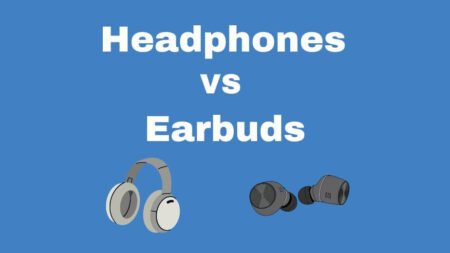Yes, playing music at maximum volume for long periods can potentially harm both your headphones and your hearing. To protect both, it’s best to keep the volume at a moderate level. Headphones have become an integral part of our daily lives, whether commuting, working out, or just enjoying music at home. With the rise of powerful audio devices and the ease of cranking up the volume, a common question arises: Does max volume damage headphones? In this article, I’ll write about the impact of high volume on headphones and offer tips on how to keep your headphones in top condition.
Understanding How Headphones Work
To comprehend how max volume might affect your headphones, it’s essential to understand their basic mechanics. Headphones consist of tiny speakers, or drivers, that convert electrical signals into sound. These drivers are designed to handle a certain range of power levels corresponding to different volume levels.
When you increase the volume on your device, more power is sent to the drivers, which vibrate more intensely to produce louder sounds. While headphones are engineered to handle varying volumes, consistently pushing them to their maximum limits can have detrimental effects.
The Impact of Max Volume on Headphones
- Driver Damage: The most significant risk of using headphones at max volume is potential damage to the drivers. Drivers are delicate components, and excessive power can cause them to distort or overheat. Over time, this can lead to a decline in audio quality, including issues like crackling, distortion, or even complete failure of the drivers.
- Component Wear and Tear: When headphones are used at max volume for extended periods, other internal components, such as the voice coil and diaphragm, can experience strain. This strain accelerates wear and tear, reducing the overall lifespan of the headphones. Additionally, the increased vibration can loosen connections within the headphones, leading to intermittent audio or total breakdown.
- Heat Buildup: High volume levels cause the drivers to work harder, which can generate heat. In extreme cases, this heat buildup can damage the materials inside the headphones, especially if they are not designed to dissipate heat effectively. Prolonged exposure to high temperatures can degrade the materials used in the drivers and other components, further shortening the lifespan of the headphones.
- Reduced Battery Life (Wireless Headphones): Using max volume can drain the battery faster for wireless headphones. This is because the amplifier inside the headphones needs to work harder to produce louder sounds, consuming more power. Over time, consistently running your headphones at high volumes can reduce battery life, meaning you’ll need to recharge more frequently or might experience a shortened overall battery lifespan.
Protecting Your Headphones from Damage
While it’s tempting to enjoy your favorite tracks at full blast, it’s crucial to consider the long-term health of your headphones. Here are some tips to help you enjoy your music without risking damage:
- Keep the Volume Moderate: Listening at a moderate volume is the best way to preserve your headphones. Not only does it protect the drivers from damage, but it also reduces the risk of hearing loss, which can result from prolonged exposure to loud sounds.
- Use a Volume Limiter: Many devices offer a volume limiter or cap that prevents the sound from exceeding a certain level. This feature is especially useful if you tend to increase the volume unconsciously. Setting a limiter can help you enjoy your music at safe levels, preserving both your headphones and your hearing.
- Take Breaks: Giving your headphones a break after extended periods of use at high volumes can help prevent overheating and reduce wear and tear. This simple step can significantly extend the life of your headphones.
- Invest in Quality Headphones: High-quality headphones are often better equipped to handle louder volumes without sustaining damage. While they might be more expensive upfront, the investment can pay off in terms of durability and sound quality.
What volume level is safe for headphones?
A safe volume level for headphones is typically considered to be around 60% to 70% of the maximum volume. Experts recommend keeping the volume at or below 85 decibels (dB) to protect your hearing. Listening at this level allows you to enjoy your music while minimizing the risk of hearing damage, especially if you’re using the headphones for extended periods. It’s also important to take regular breaks to give your ears a rest.
Conclusion
In summary, using your headphones at max volume can indeed damage them over time. The delicate components inside headphones are not designed to withstand prolonged exposure to high power levels, leading to potential issues like driver damage, component wear, and heat buildup. To extend the life of your headphones and maintain their sound quality, it’s advisable to keep the volume at a moderate level, use a volume limiter, take breaks, and consider investing in higher-quality headphones. By doing so, you can enjoy your music safely and ensure that your headphones remain in good condition for years to come.
4o



